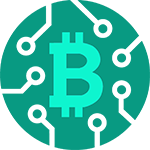
As crypto becomes more widespread, the regulatory issues become more significant. The recent update of the Markets in Crypto-Assets Regulation regarding stablecoins has led to a substantial market boom. The new rules impose strict restrictions on the use of stablecoins denominated in dollars, which account for the majority of global trading volumes.
While MiCA primarily targets the intersection of crypto assets and traditional financial services, its implications for decentralized finance are more nuanced. DeFi, by its very nature, generally operates independently of the traditional financial system. But people still need to be able to move their money between the two worlds somehow, and I believe that compliant stablecoins are the best gateway for it.
The regulatory shift has influenced major players in the crypto arena, such as Circle and Tether, who issue stablecoins, forcing them to reconsider their strategies. So, what potential do compliant stablecoins have regarding the DeFi market? Let’s break it down.
The role of compliant stablecoins: Bridging TradFi and DeFi
TradFI and DeFi have existed in parallel for a long time, and together, they can bring financial opportunities never seen before. However, bridging the two worlds is a challenging task. In this sense, compliant stablecoins hold huge potential to act as a bridge between them.
As regulations tighten, compliant stablecoins are expected to become major assets. For example, in the Europen Union, stablecoin users are already required to transition from unregulated coins to compliant ones (at least if they want to use them with centralized finance platforms, where the use of compliant assets is often strictly mandated).
Centralized stablecoins like Tether (USDT) and USD Coin (USDC) are at the forefront of this regulatory evolution. They are typically issued by entities that maintain reserves in fiat currency, which allows them to offer stability and serve as gateways between the crypto world and traditional finance. However, since they essentially provide a financial service, it means that they are subject to oversight and stricter standards of transparency and consumer protection.
Compliance is critical to ensure the legitimacy of these stablecoins and allow them to be integrated into the global financial ecosystem. Circle, as mentioned earlier, has already made a significant leap by becoming the first global stablecoin issuer to fully comply with the new regulations. And it is likely that we will see more companies choose this path in the near future.
Where do decentralized stablecoins stand?
It should be mentioned that centralized stablecoins still have decentralized counterparts that don’t have a direct impact on centralized financial services. These stablecoins are typically governed by decentralized protocols and don’t rely on a central issuer or a reserve of fiat currency.
Because they are not linked to the TradFi system, these stablecoins are not subject to regulations like MiCA. However, this also means they are less likely to be integrated into traditional financial services, limiting their role in bridging the gap between TradFi and DeFi. For now, decentralized stablecoins remain a component of the DeFi ecosystem that provides liquidity without the need for centralized oversight.
However, I believe that centralized stablecoins are going to become the primary way in and out of the blockchain space, and they will have to be compliant to ensure legitimacy and broader integration into the global financial ecosystem. Eventually, as time goes by, I think that all redeemable stablecoins might follow this path due to their custodial nature.
The risk of increasing stablecoin centralization
There are decentralized stablecoins out there that show the trend of leaning toward greater centralization. A notable example of this is the recent announcement by MakerDAO regarding the migration of Dai (DAI), one of the most popular decentralized stablecoins, to the new USDS. The move sparked a lot of discussions among the DeFi community, with many taking it as a shift towards a more centralized model.
Increased centralization typically brings with it greater regulatory scrutiny and compliance requirements. This could limit the use of such stablecoins within the DeFi environment, as they would become less attractive to users who value the decentralized nature of crypto assets. However, they might be able to take some of the business currently occupied by USDT and USDC.
Compliant stablecoins: Controlled financial system evolution
There are several advantages offered by compliant stablecoins that make them a foundation of the future financial system. Firstly, and most importantly, they can be redeemed directly through banks and other financial organizations. This means that people can reliably bring their money outside of the crypto ecosystem and use it in their daily lives.
Additionally, there are yield opportunities for users. A huge number of crypto users are interested in profit-making, whether it be interest payments, staking rewards, or capital gains. And the yield products based on compliant stablecoins will be regulated, ensuring the ways to profit are legal and safe. Admittedly, decentralized stablecoins also often offer sources of yield that tend to be higher than what centralized stablecoins could offer. Whether they want to get yields protected by human laws or by math is something users can choose for themselves based on individual preferences and risk tolerance.
Moreover, the question of whether a stablecoin is fully backed by fiat will be eliminated. Adhering to transparency and security standards means that users will have greater confidence in the coins’ stability. In comparison, fully decentralized stablecoins offer full transparency on-chain already, so users can verify the backing of the coins for themselves. Again, the choice comes down to which trust mechanisms a user finds more reliable—regulatory frameworks backing compliant stablecoins or the algorithmic transparency of decentralized ones.
Conclusion
To sum up, the evolving regulation will play a crucial role in shaping the future of stablecoins and their ability to bridge TradFi and DeFi. The existence of compliant centralized stablecoins will help TradFi users engage with digital assets seamlessly and without worrying.
Decentralized stablecoins, meanwhile, will remain largely separate from traditional financial systems and regulations, serving different needs within the DeFi ecosystem. However, this could change as the lines between centralization and decentralization blur.
Of course, predicting the market’s trajectory over the years is quite challenging. However, one thing is certain—compliant stablecoins will enable the composability of TradFi and DeFi. I am sure that DeFi is the future of the whole financial system, and compliant stablecoins can enable a more traditional and controlled way to transform it.
Tổng hợp và chỉnh sửa: ThS Phạm Mạnh Cường
Theo Crypto News
